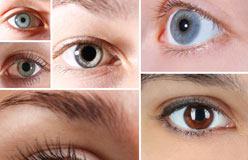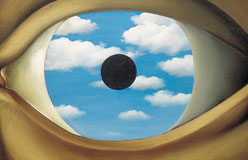Vision is the team captain of the five senses. Hearing, tasting, smelling, and feeling are all important, no doubt. But in general, humans get the majority of their information about the world through their eyes.
The first “eyes” in nature appeared on sea animals hundreds of millions of years ago. They were just light-sensitive patches on the skin. But sensing light was so handy for survival that true vision began to evolve. As time went by, more complicated animals developed the ability to perceive colors, shapes, and motion.
Until about 5,000 years ago, most humans were hunters. That’s why human eyes are set up for stalking and killing prey. For instance, both eyes are in the front of the head (not the sides), and they can distinguish colors, so that humans can identify one plant or animal from another.
Today, not many people hunt for food, but eyes are still important for survival—and for doing things like reading, roller-skating, and driving cars. We have also invented things to improve our vision. With a microscope, we can look at objects that are as tiny as blood cells. With a telescope, we can investigate galaxies that are 13 billion light-years away.







